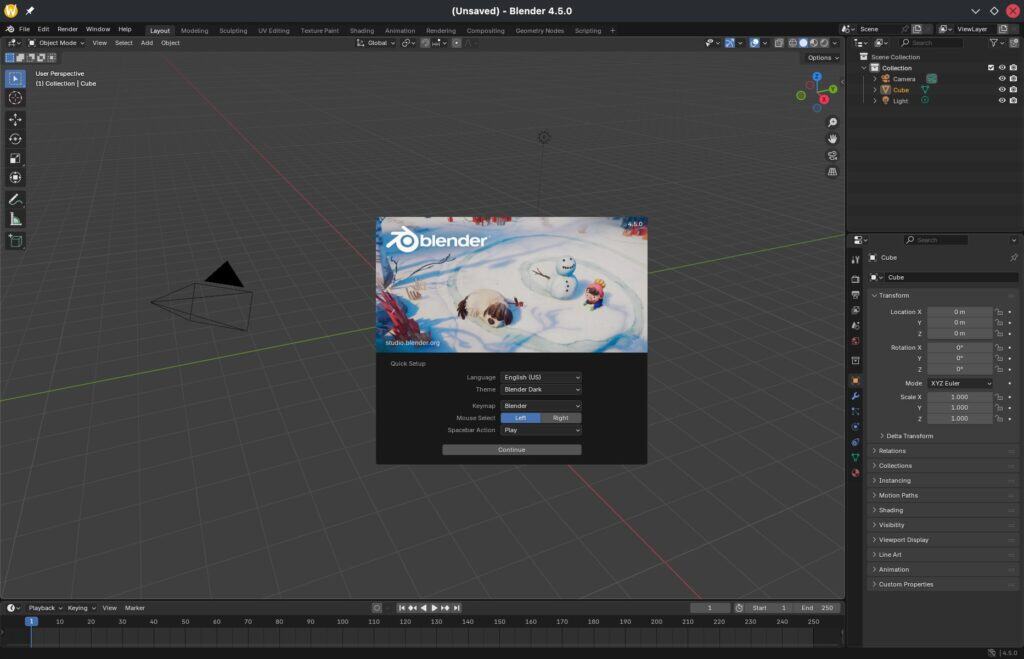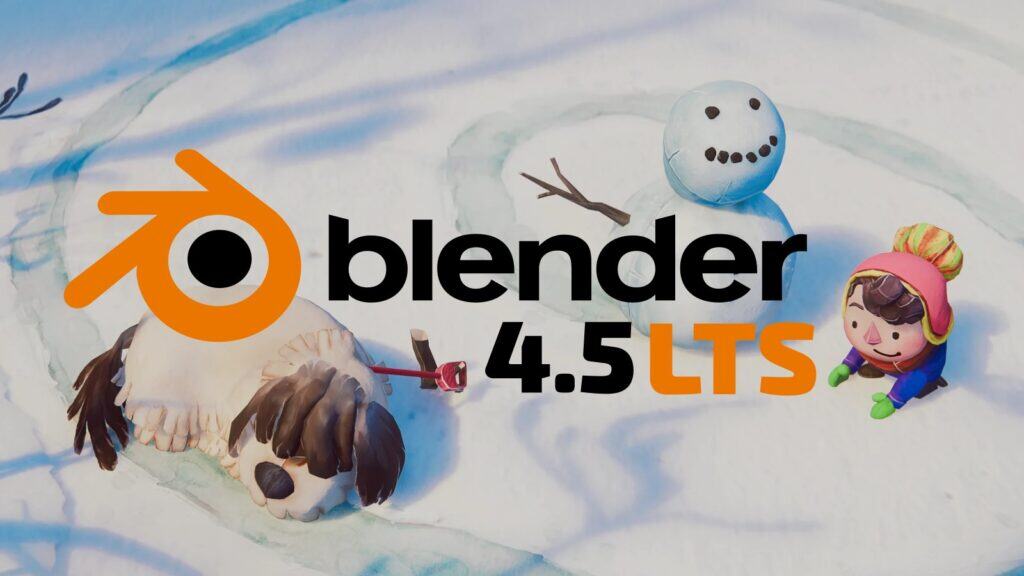Blender 4.5 LTS, one of the world’s most popular open-source 3D creation tools, is officially out, bringing two years of guaranteed updates and substantial quality-of-life improvements (maintained until July 2027), packed with enhancements spanning animation, compositing, rendering, and user interface improvements.
One of the most anticipated features, the Vulkan backend, is now fully supported and matches the long-standing OpenGL functionality. While not enabled by default, activating Vulkan is straightforward via Blender’s preferences menu, promising improved performance.
Key Vulkan notes:
- Requires NVIDIA driver 550+ on Linux.
- Supports subdivision, multi-threaded shader compilation, and more.
- Still has some limitations, such as handling extremely large meshes (100M+ vertices).
In animation and rigging, artists now have greater flexibility, as bone viewport display modes can be overridden per bone, and snapping settings in the Drivers Editor can be toggled independently from other animation editors.
Additionally, animators will appreciate new features such as the “Duplicate Shape Key” operator and “Update from Objects,” which simplify complex workflows.
Vertex Groups in edit mode also received thoughtful improvements—auto-normalization now automatically adjusts vertex weights, streamlining weight management. Plus, pose mode selection gains four new “Select Grouped” options (Children, Immediate Children, Parents, and Siblings), aligning it closely with edit mode.

The compositor receives substantial updates as well, welcoming several new nodes, including Vector Math, Float Curve, and the Blackbody node, which are directly aligned with their corresponding shader node counterparts. Users can now leverage the powerful Image Info and Image Coordinates nodes for precise compositing tasks.
Texture nodes, popular in Geometry and Shader Nodes—such as Voronoi, Noise, and Gradient—are now fully integrated into the compositor, enhancing creative possibilities.
Blender 4.5 LTS continues to improve cycles rendering with adaptive subdivision, enhanced bump mapping for preserving details, and even the ability to implement custom cameras using Open Shading Language. Notably, GPU rendering improvements are arriving, although Blender has identified stability issues with AMD and Intel GPUs, with fixes aimed for in future patches.
In the Geometry Nodes domain, the latest release introduces powerful new nodes for mesh editing, including Set Mesh Normal, which enables smoother geometry transitions, as well as a robust suite of import nodes for external data formats such as OBJ, STL, and CSV.
Grease Pencil integration further matures with new nodes specifically designed to efficiently manipulate depth, color, and softness attributes.
On the usability side, the update introduces horizontal scrolling support, streamlined menus, and enhanced pen tablet functionality for improved ergonomics. The Asset Browser receives several handy improvements, including screenshot-based asset previews, enhanced drag-and-drop functionality, and compact horizontal list views.
Last but not least, performance-wise, Blender 4.5 LTS is noticeably faster. Vertex attribute domain interpolations and normal handling are significantly faster, enhancing productivity. Eevee and viewport rendering also benefit from multi-threaded shader compilation and other optimizations
For a deep dive on all novelties, see the release notes or refer to the official announcement. Blender 4.5 LTS is available for download from the project’s website for Windows, macOS, and Linux.
